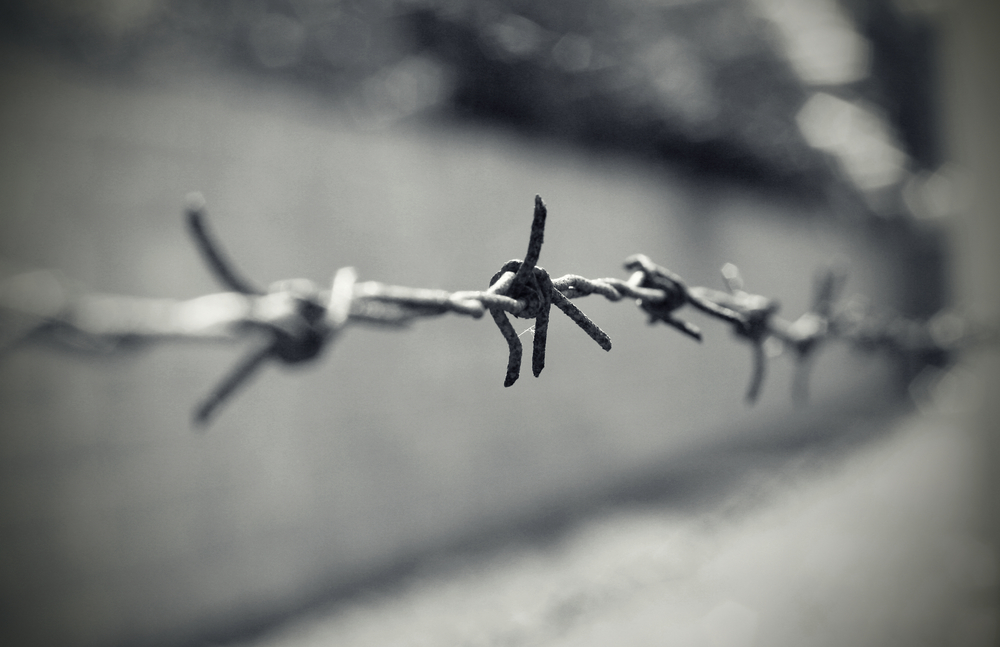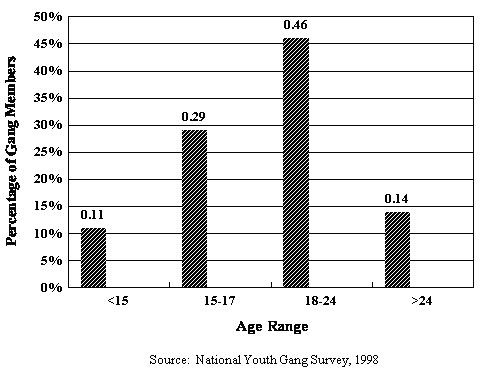More Gangs, Less Crime
By Russell S. Sobel

“If the gangs did not exist, there would be more violent crime.”
However, an article I recently coauthored with Brian J. Osoba, “Youth Gangs as Pseudo-Governments: Implications for Violent Crime,” calls this conventional wisdom into question.1 Our analysis suggests not that gangs cause violence, but that violence causes gangs. In other words, gangs form in response to government’s failure to protect youths against violence. The surprising implication of our insight is that efforts to reduce gang activity could actually increase violent crime.
The explanation for this seeming paradox derives from well-established economic theories on how and why governments evolve from situations of anarchy.2 That literature suggests that within a society without law and order, individuals are under constant threat of being victims of aggression and crime, and small “gangs” evolve to provide protection services to people. By forming groups, people who cannot protect themselves individually can be more secure; an attack on a single member would result in group retaliation. In other words, individuals form gangs for the same reason that national governments form mutual defense alliances such as NATO.
Applying this concept to street gangs suggests that gangs evolve in response to a high level of pre-existing violence in communities. More important, it suggests that the net effect of gangs is to reduce the level of violence—i.e., if the gangs did not exist, there would be more violent crime. In the end, the threat of gang retaliation prevents some violent crimes that would have otherwise taken place.
A clear example of our logic is the case of gangs in the prison system. This is one of the only places where a 40-year old white man would be a gang member, and for good reason. In prison, inmates are frequently the victims of violence and intimidation that go unreported (or if reported, unpunished). This makes the environment similar to that in government-run schools and on inner-city streets. An inmate who joins a gang receives protection, which lowers the odds that he will be a victim of violent crime. Once again, the underlying demand for gangs stems from the presence of pre-existing violence.
Prison inmates and inner-city youths both face relatively high chances of being victimized and, in both cases, government authorities do little to those who commit the offenses. Thus, the victims find substitutes for government law enforcement in order to secure their rights. While gangs, like governments, do use force to retaliate against aggression and to enforce rules, the net effect of both is to reduce the level of violence relative to what would exist without them.
This reversed direction of causality also helps to explain one of the big puzzles in the academic literature on gangs: why the data on gang membership do not show an abrupt drop at age 18. The conventional wisdom is that gangs exist to commit crimes and, thus, employ youths to “do their dirty work.” These youths will go unpunished or more-lightly punished because they are juveniles. Once a member reaches age 18, he is punished as an adult and, therefore, is no longer a “lowest-cost employee” of the gang. According to this theory, people under age 18 should dominate gang membership. As Figure 1 shows, that is not what happens. Instead, gang membership begins to drop off in the mid-to-late 20s. The “violence causes gangs” theory, on the other hand, predicts that those who are mostly likely to join gangs are people who are most likely to be victims of violence committed by youths who will go relatively unpunished. Because a 19 year old and a 17 year old are equally likely to be victimized, they should be equally likely to join gangs. Only as individuals move into their late 20s, entering into marriage and new social groups in which they interact less with teenagers, do they become less likely to be victimized.
Previous academic researchers used cross-sectional data—that is, data at a single point in time—for many cities. However, such data cannot effectively be used to test whether gangs cause crime or crime causes gangs. To do such a test requires the use of time-series data—data for one city over many time periods. If gangs cause crime, then increases in gang membership should precede an increase in crime. If, on the other hand, crime causes gangs, then an increase in crime should precede an increase in gang membership.
Brian Osoba and I used six years of monthly gang membership data obtained directly from the Los Angeles Police Department (LAPD) Special Operations Support Division. Our empirical results suggest that, indeed, crime cause gangs. We found that upward spikes in the crime rate were followed by subsequent increases in gang membership, but not vice versa. Our results are especially strong for homicide and aggravated assault, which appear to be the strongest threats pushing individuals to join gangs.
These findings imply that law-enforcement efforts to break up gangs could actually result in more violence. Enforcement efforts that destabilize the gang structures within a city will make it more difficult for gangs to offer protection and will interfere with gangs’ ability to make treaties or truces. Indeed, in a separate article, David B. Skarbek and I, using a different data set, found that, as police budgets devoted to gangs increased, holding other factors constant, gang drive-by shootings per capita rose.3
Our theory also has interesting implications for school bans on students wearing “gang colors” or symbols. Wearing gang colors is the way a youth signals to other youths that he is part of a gang. By sending this signal, the youth is less likely to be victimized because of the threat of a gang retaliation. But banning the sending of this signal makes it more difficult for an aggressor to determine if a particular potential victim is a gang member. The traditional workings of the “market for lemons” model apply to this situation. The market for lemons model applies to a case in which buyers are unable to determine if a used car is a good one or a bad one. In this case, the buyer will assume any given car is of average quality, and offer only an average price. At this average price, few good used cars are offered for sale (as they are really worth more than the average) while more bad used cars are offered for sale (as they are really worth less than the average). Similarly, banning gang symbols and colors probably makes non-gang members safer as they are now harder to distinguish from true gang members. But, simultaneously, it makes it more likely a true gang member will be victimized based on an assumption he or she is not in a gang.
For a podcast on pirate activities, see Pete Leeson on Pirates and the Invisible Hook on EconTalk.
These findings are also consistent with the literature on mafia activities, which shows that the mafia tends to emerge when state policing power is weak or there is a lack of strong governmental enforcement of rights.4 They are also consistent with evidence from the “Wild West” days of the United States and from pirate activities at sea.5 Finally, they also help to explain why a family moving into a more violent area is likely to have children, who in the past were never associated with gangs, become gang members.
In addition, realizing that gangs are in many ways embryonic governments yields insights into the theory explaining the evolution of governments. Some gangs, for example, have elaborate constitutional structures that govern gang member behavior, decision rules, and authority structures.6
As long as the government does such a poor job of protecting youths from aggression, there will be a demand for (and supply of) gang activity. This logic is not limited to youths, as the lack of government protection of rights in prisons also leads to a similar outcome. These gangs perform a basic function of mutual protection, and efforts to break up these gangs destabilize the situation and result in more violence, not less.
See Sobel, Russell S. and Brian J. Osoba. 2009. “Youth Gangs as Pseudo-Governments: Implications for Violent Crime,” Southern Economic Journal 75:4, pp. 996-1018.
See Nozick, Robert. 1974. Anarchy, State, and Utopia. Basic Books: New York, NY; Buchanan, James M. 1975. The Limits of Liberty: Between Anarchy and Leviathan. University of Chicago Press: Chicago, IL; and Gordon, Scott. 1976. “The New Contractarians,” Journal of Political Economy 84:3, pp. 573-590.
See Skarbek, David B. and Russell S. Sobel. 2009. “The Industrial Organization of Street Gangs,” manuscript.
See Bandiera, Oriana. 2003. “Land Reform, the Market for Protection, and the Origins of the Sicilian Mafia: Theory and Evidence,” Journal of Law, Economics, and Organization 19:1, pp. 218-44; and Anderson, Annelise. 1995. “Organised Crime, Mafia and Governments,” in Gianluca Fiorentini and Sam Peltzman (eds.) The Economics of Organised Crime. Cambridge University Press: Cambridge, U.K.
See Dowd, Kevin. 1997. “Anarchy, Warfare, and Social Order,” Journal of Political Economy, 105:3, pp. 648-651; and Leeson, Peter T. 2009. The Invisible Hook. Princeton University Press: Princeton, NJ.
See Skarbek, David B. 2010. “Putting the “Con” Into Constitutions: The Economics of Prison Gangs,”Journal of Law, Economics, and Organization 26:2, pp. 183-211. PDF file.

